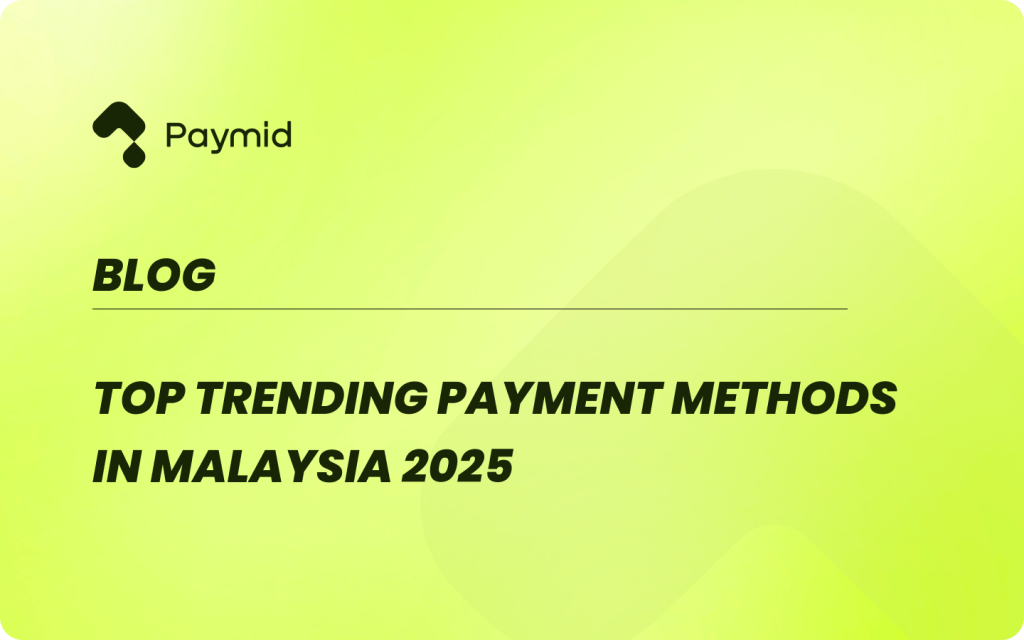Top Trending Payment Methods in Malaysia in 2025

Malaysia’s payment landscape is evolving at a rapid pace, driven by a tech-savvy population, government support for digitalization, and a booming e-commerce market. As of April 2025, the shift toward cashless transactions continues to accelerate, with innovative payment methods gaining traction alongside traditional options. Whether you’re a business owner looking to optimize your checkout process or a consumer curious about the latest trends, here’s a rundown of the top trending payment methods in Malaysia this year.
1. Digital Wallets: The Cashless Kings
Digital wallets have solidified their position as a dominant force in Malaysia’s payment ecosystem. With an estimated 25.5 million users projected by 2025, platforms like Touch ‘n Go eWallet, GrabPay, and Boost are leading the charge. These wallets offer seamless QR code payments, bill settlements, and even cross-border capabilities in some cases, making them a favorite for both in-store and online purchases.
- Why It’s Trending: Convenience is key. Malaysians love the ability to pay with a quick scan, often paired with cashback offers and loyalty rewards. The integration of wallets with everyday services—like ride-hailing, food delivery, and toll payments—has made them indispensable.
- Fun Fact: Touch ‘n Go, originally a toll payment card, has transformed into a digital powerhouse, reflecting Malaysia’s appetite for versatile payment tools.
2. Bank Transfers (A2A): The E-Commerce Backbone
Account-to-account (A2A) payments, particularly through platforms like Financial Process Exchange (FPX) and DuitNow, remain a cornerstone of Malaysia’s e-commerce scene. In 2023, A2A transactions accounted for 39% of e-commerce payments, and this trend shows no signs of slowing down in 2025.
- Why It’s Trending: High bank penetration (over 96%) and trust in familiar banking apps make A2A a go-to option. FPX connects customers directly to their bank accounts for secure, real-time payments, while DuitNow’s QR functionality extends its reach to in-person transactions.
- Pro Tip: Businesses offering FPX or DuitNow see lower cart abandonment rates due to the method’s reliability and widespread acceptance.
3. Credit and Debit Cards: Steady and Strong
Cards, especially Visa and Mastercard, continue to hold a significant share of the market, with contactless payments gaining momentum. In 2022, 71% of surveyed Malaysians preferred cards for online purchases, and by 2025, the market value of card payments is expected to hit MYR 322 billion.
- Why It’s Trending: Contactless cards are fast, secure, and widely accepted, appealing to urban consumers. Virtual credit cards (VCCs) are also on the rise, with 69% of Malaysians expressing interest in using them for daily transactions.
- What’s New: The push for digital-first card options, like those linked to mobile wallets, keeps this method relevant in a cashless era.
4. Buy Now, Pay Later (BNPL): The Young Shopper’s Choice
BNPL services like Atome, Grab PayLater, and myIOU are exploding in popularity, especially among younger Malaysians. Spending via BNPL is forecasted to triple by 2025, potentially exceeding 10% of e-commerce transactions.
- Why It’s Trending: Interest-free installments make big purchases more affordable, appealing to Gen Z and millennials. Unlike credit cards, BNPL doesn’t burden users with high interest rates, driving its adoption for everything from fashion to electronics.
- Growth Insight: Platforms are partnering with major retailers, making BNPL a checkout staple across e-commerce sites.
5. Cash: The Fading Giant
While cash is losing ground, it still holds a notable presence, especially in physical stores. In 2023, it accounted for nearly 40% of point-of-sale (POS) payments, but forecasts suggest this will drop to 15.1% by 2025 as digital alternatives take over.
- Why It’s Trending (Downward): Cash remains king for small vendors and rural areas, but the convenience of digital payments is steadily eroding its dominance. Cash-on-delivery (COD) lingers in e-commerce (9% of transactions), catering to those hesitant about upfront digital payments.
- Shift Alert: Government initiatives to promote cashless transactions are accelerating this decline.
What’s Next for Malaysia’s Payment Scene?
Looking ahead, a few trends are poised to shape the future. Cryptocurrency is gaining curiosity, with platforms like NOWPayments offering businesses a way to accept digital currencies—though it’s still niche. AI-driven payment solutions, such as fraud detection and personalized checkout experiences, are also emerging, promising smoother transactions. Meanwhile, the rise of social commerce on platforms like WhatsApp and Instagram is blending payments with social media, further blurring traditional lines.
Final Thoughts
Malaysia’s payment methods in 2025 reflect a dynamic mix of innovation and tradition. Digital wallets and A2A transfers lead the pack for their speed and accessibility, while BNPL caters to a growing demand for flexibility. Cards hold steady, and cash, though fading, isn’t out of the picture yet. For businesses, offering a variety of these options is key to capturing a diverse customer base in this fast-evolving market.

